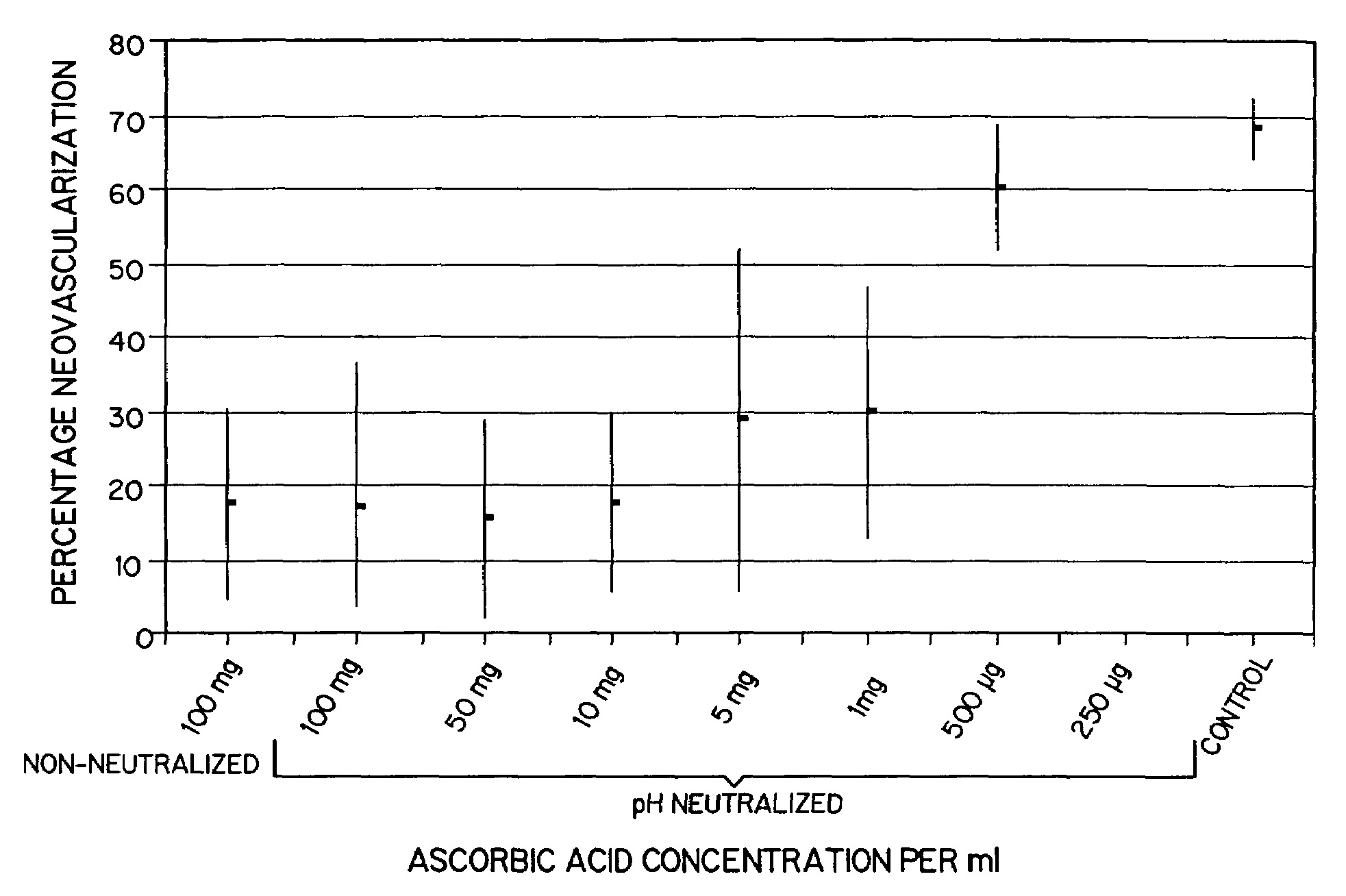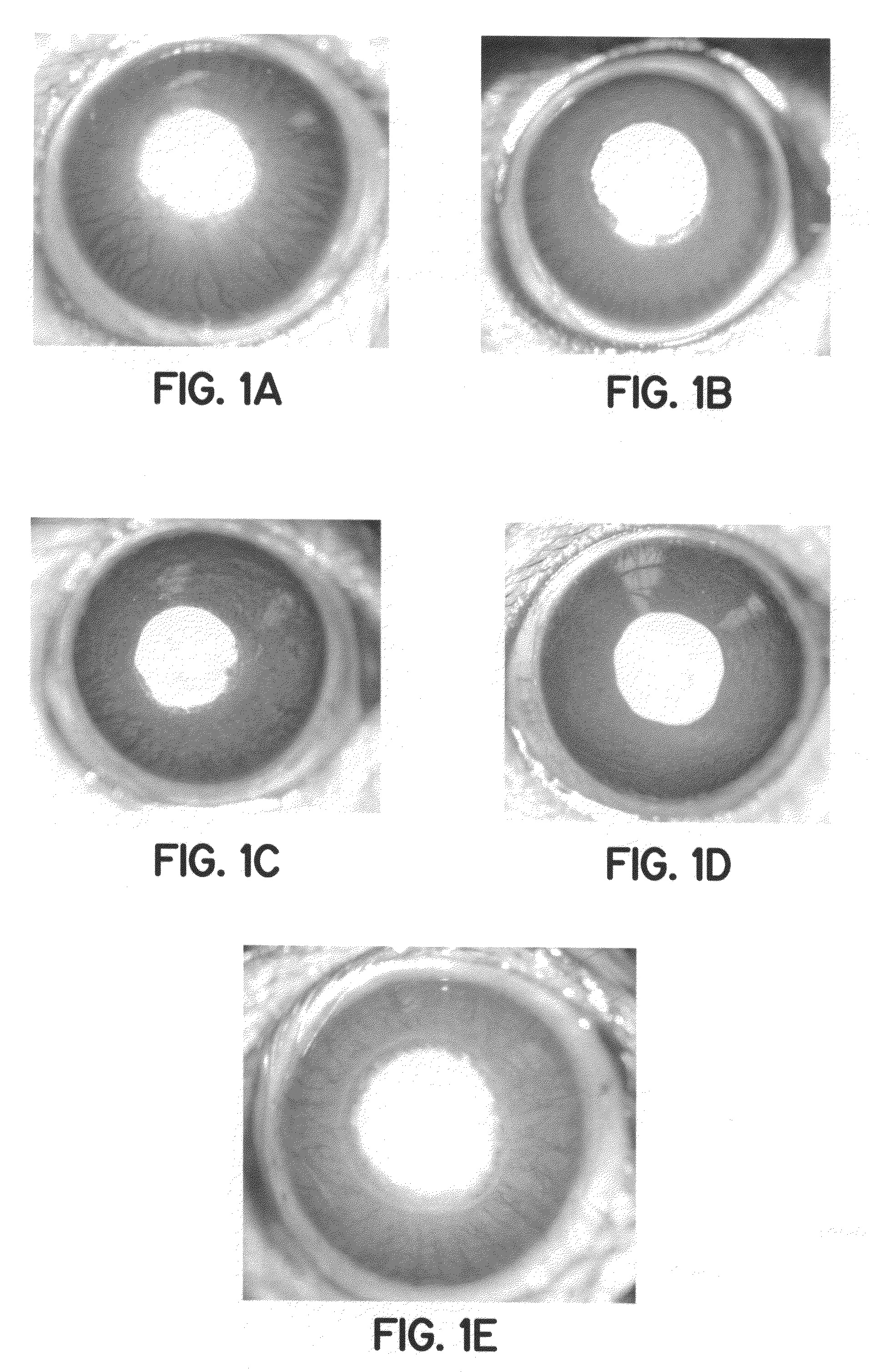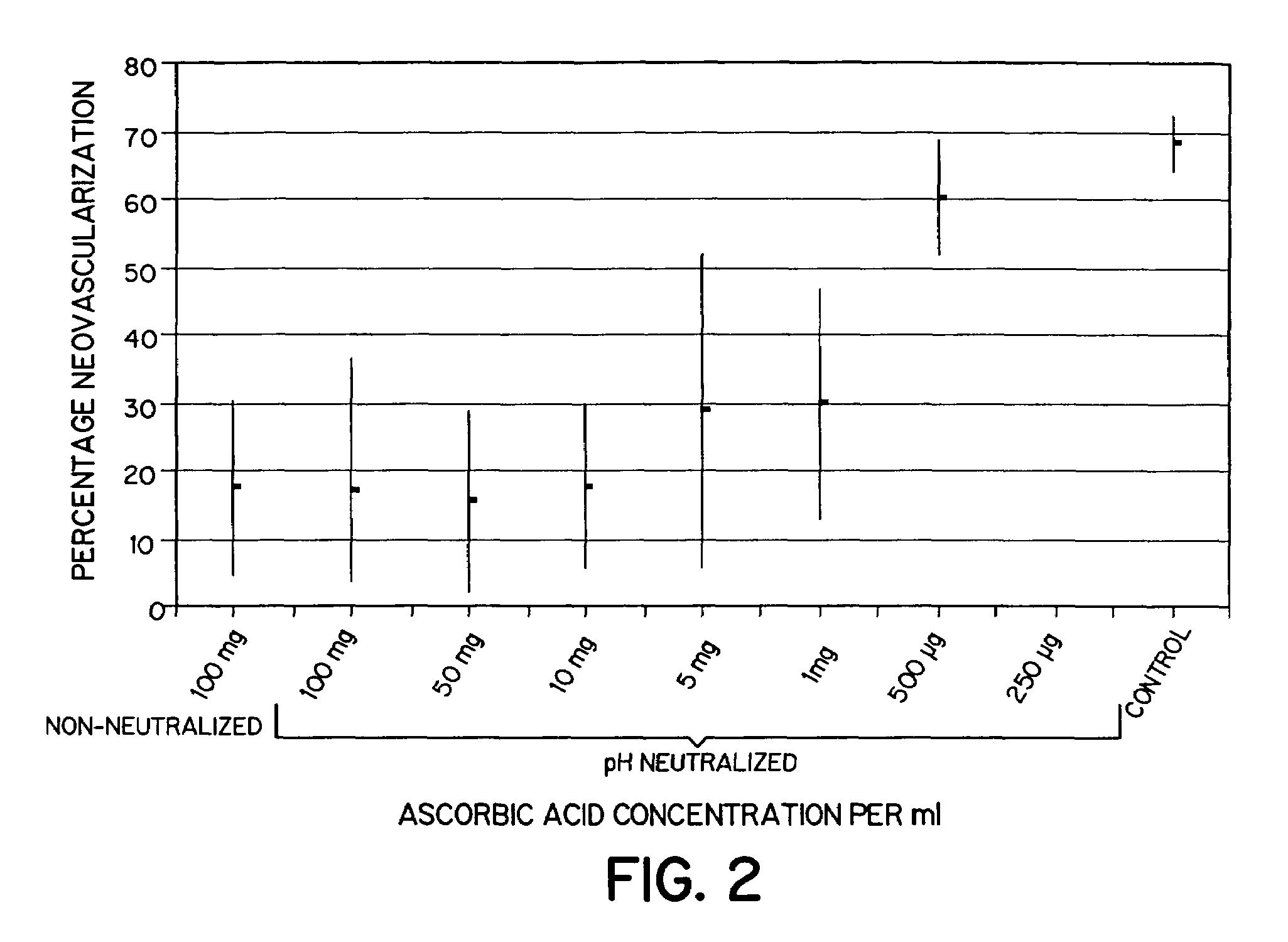Reduced bioirritant composition
a bioirritant and composition technology, applied in the field of reducing bioirritant compositions, can solve the problems of irritation and inflammation, topically applied compositions, burning, redness and swelling, etc., and achieve the effects of reducing neovascularization, reducing neovascularization, and less irritating
- Summary
- Abstract
- Description
- Claims
- Application Information
AI Technical Summary
Benefits of technology
Problems solved by technology
Method used
Image
Examples
example 1
[0072]This example demonstrates that sodium saccharine and sucrose have little effect on the pH of an aqueous composition of the invention. In this example, samples 1-6 were prepared from fresh lemon juice which was filtered to remove the pulp and other solid materials. Sample 1 was plain lemon juice with no sweeteners or additives. Samples 2-4 contained 3.0 ml lemon juice and sodium saccharine obtained under the trademark Sweet-N-Low in the amounts indicated in Table 1. Sample 5 contained 3.0 ml lemon juice and sucrose obtained as table sugar. Sample 6 was obtained by combining Samples 4 and 5 together. The proportions of the components and the resulting pH are indicated in Table 1 below.
[0073]
TABLE 1Vol. of LemonSample No.JuiceAnti-IrritantpH13.0 mlNone2.3623.0 ml1.0699 g2.25saccharine33.0 ml1.9066 g2.23saccharine43.0 ml 2.888 g2.35saccharine53.0 ml3.3254 g sugar2.1763.0 ml3.3254 g sugar2.24 2.888 gsaccharine
[0074]The data demonstrate that the addition of saccharine and sucrose to...
example 2
[0075]An oral composition was prepared from 3.0 ml of fresh lemon juice and 1.0 gram of non-nutritive sweetener containing saccharine obtained under the trademark Sweet-N-Low. An adult male subject having calculus deposits on the subgingival and supragingival tooth surfaces applied the composition once every two days using a small proxy brush for inserting between the teeth followed by rinsing with the oral composition. The patient reported to irritation, burning or discomfort to the gum surfaces or to the teeth normally associated with an acidic solution when applied to the gums and tooth surfaces. After two weeks, significant reduction in the calculus depositions on the teeth were observed and the remaining calculus deposits easily separated from the tooth surface by the use of a dental tool.
example 3
[0076]A topical composition was prepared from about 3.0 ml fresh lemon juice and 1.0 g of a sweetener containing sodium saccharine obtained under the trademark Sweet-N-Low. The resulting solution was applied to a scratch on the skin of an adult male patient. The patient reported substantially no irritation or burning of the scratch.
PUM
| Property | Measurement | Unit |
|---|---|---|
| concentration | aaaaa | aaaaa |
| concentration | aaaaa | aaaaa |
| concentration | aaaaa | aaaaa |
Abstract
Description
Claims
Application Information
 Login to View More
Login to View More - R&D
- Intellectual Property
- Life Sciences
- Materials
- Tech Scout
- Unparalleled Data Quality
- Higher Quality Content
- 60% Fewer Hallucinations
Browse by: Latest US Patents, China's latest patents, Technical Efficacy Thesaurus, Application Domain, Technology Topic, Popular Technical Reports.
© 2025 PatSnap. All rights reserved.Legal|Privacy policy|Modern Slavery Act Transparency Statement|Sitemap|About US| Contact US: help@patsnap.com



